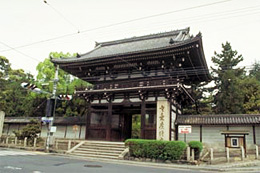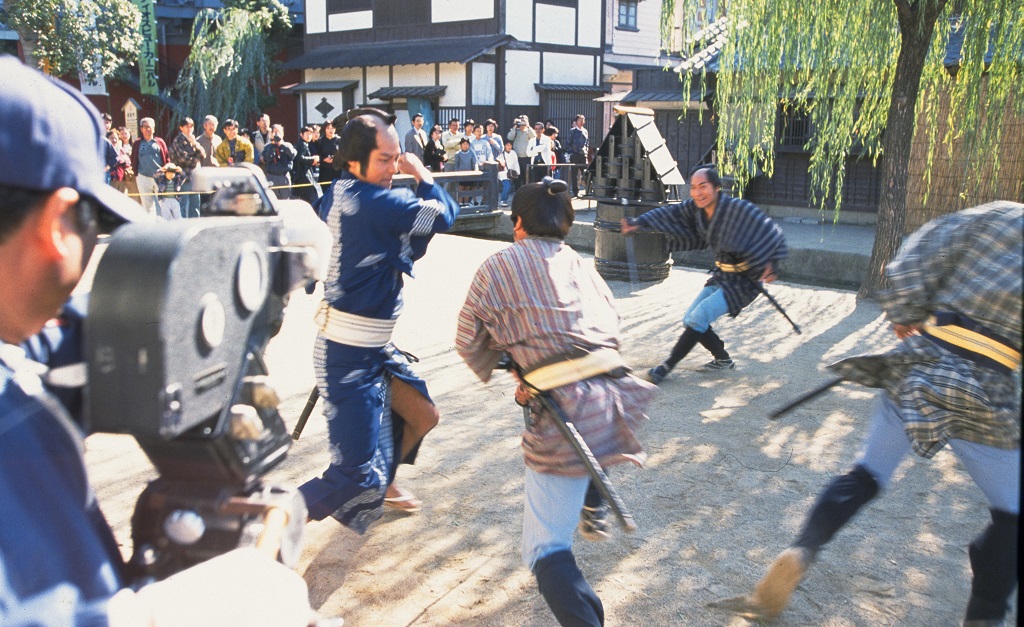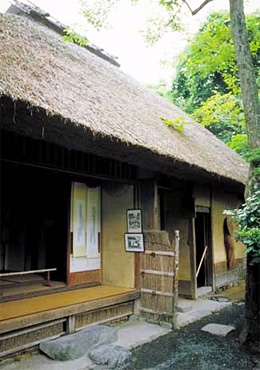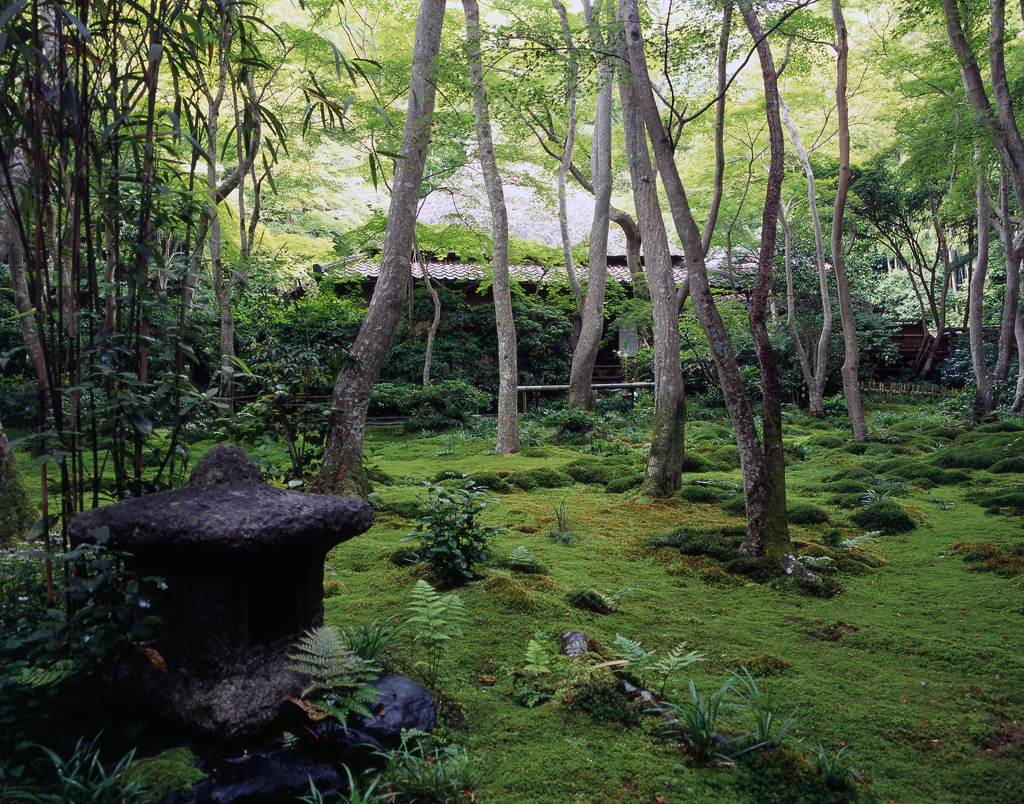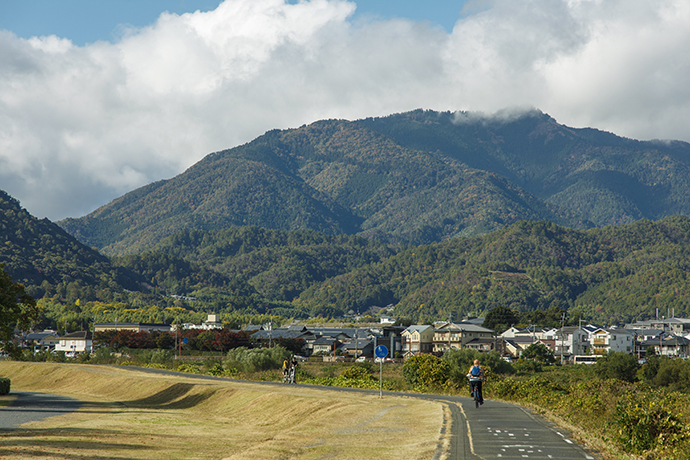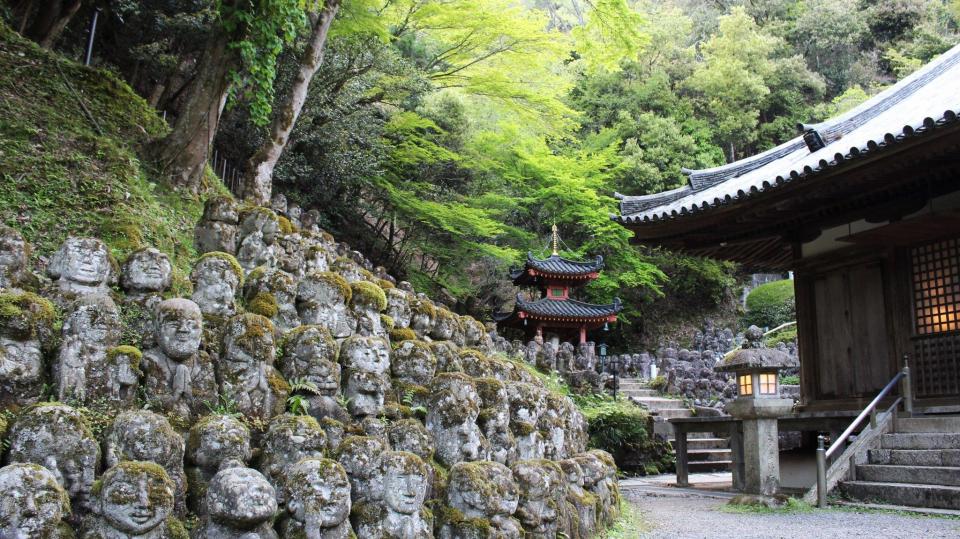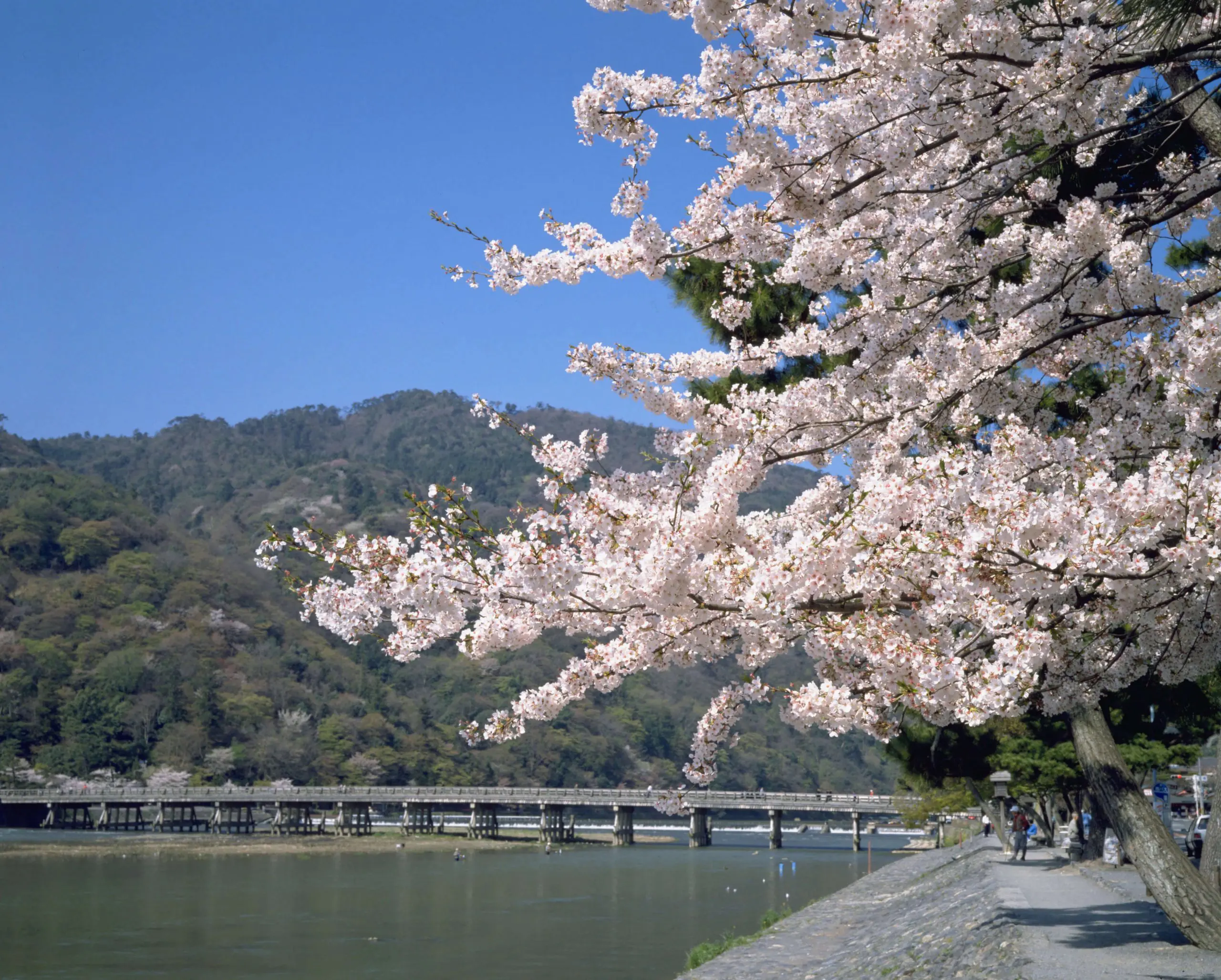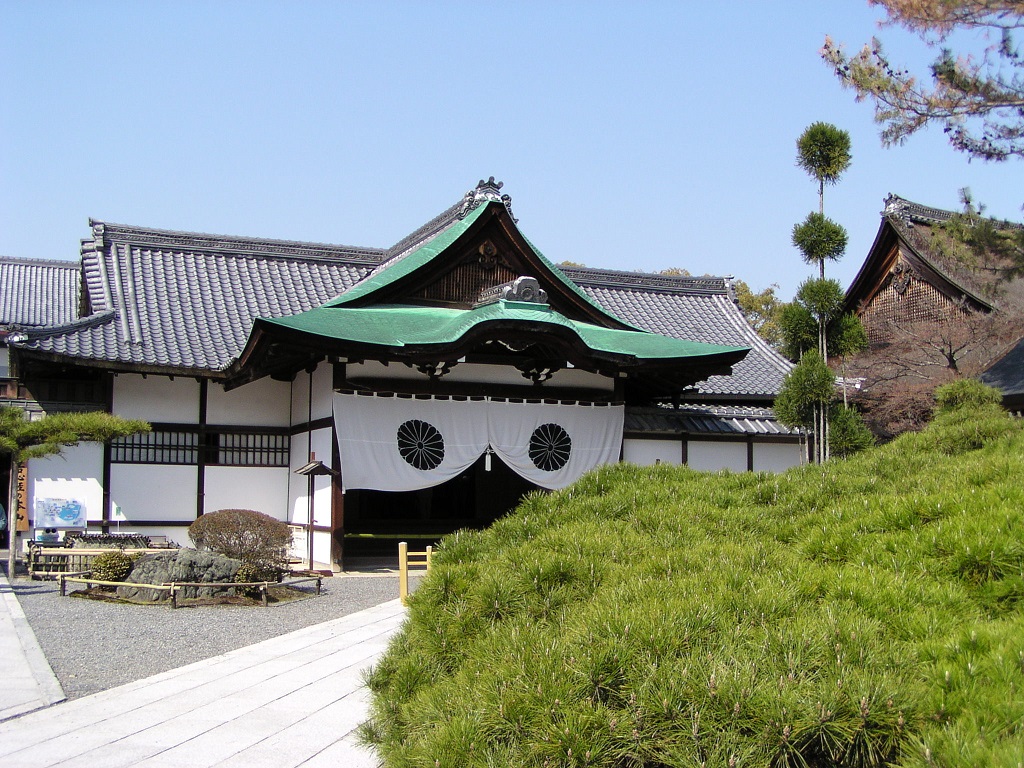
Daikaku-ji Temple is a temple of treasures. Steeped in history, this former Imperial villa has been a center of cultural, religious and political developments of great significance. The palatial buildings are arranged beside a large lake, the oldest artificial pond in Japan, which was the site of long-ago Imperial moon-viewing parties. Elegant courtiers of Heian Period would venture out on the lake in small boats to listen to koto (Japanese zither) music and compose verses celebrating the full moon. This is commemorated today with public moon-viewing parties on the eve of the Harvest full moon.
The grounds are also known for their cherry and plum trees as well as their many flowers. In fact there is a school of ikebana (flower arranging) associated with the temple, and a flower festival is held here every year in the spring.
The temple was also the site of an incident involving Kukai, who was the saint and founder the Shingon sect of Buddhism. When Kyoto was besieged by troubles, he encouraged the Emperor to copy the text of a Buddhist scripture. This practice is called “Shakyo”, and is considered a method to attract merit and produce enlightenment. Shakyo training remains a special focus of Daikaku-ji Temple. Visitors can try it for themselves.
Finally, the art treasures of Daikaku-ji Temple are not to be missed. Sculptures, mandalas, painted screens, and ancient works of calligraphy are all part of the temple’s collection of priceless objects from Kyoto’s Imperial and religious past.
Basic Information
- Address : 4 Saga-Osawa-cho Ukyo-ku, Kyoto
- Website : Click here
